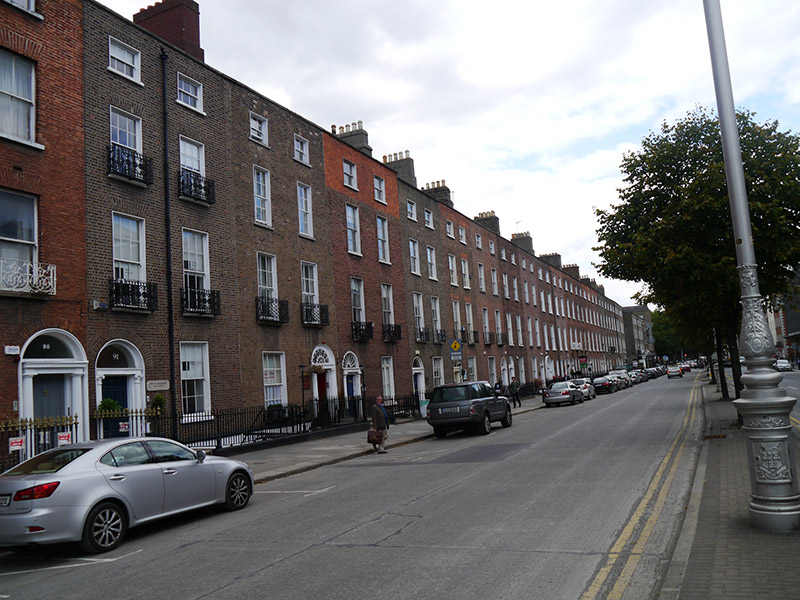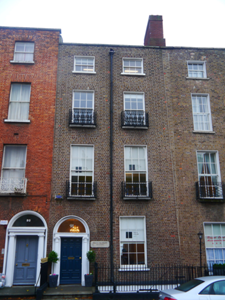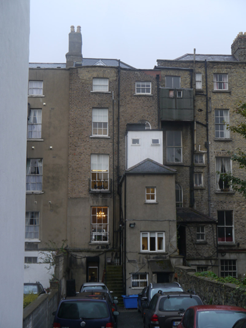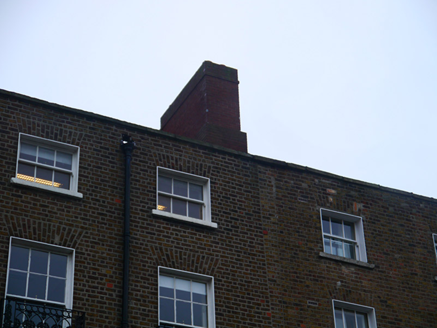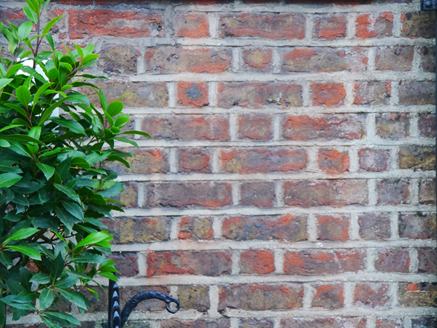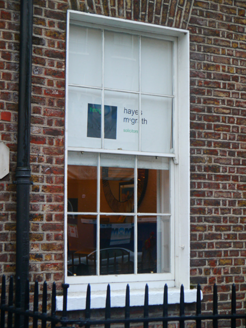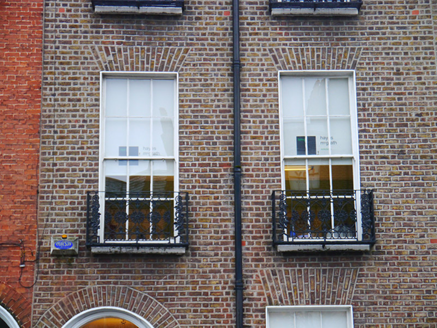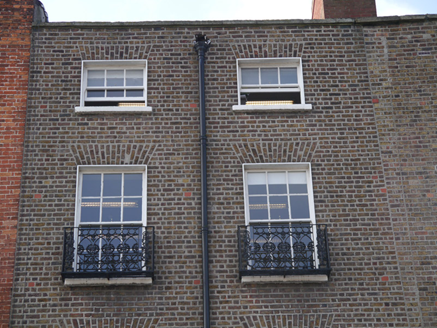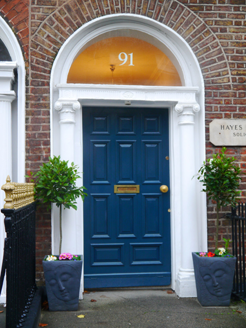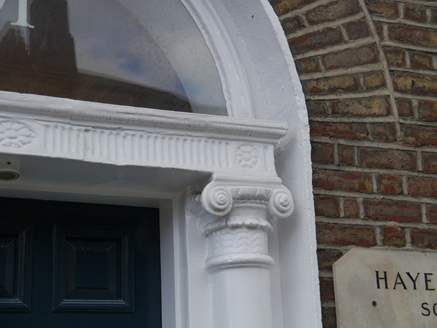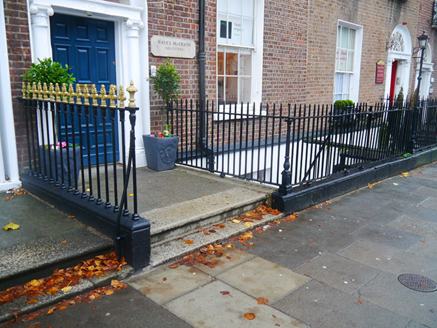Survey Data
Reg No
50930181
Rating
Regional
Categories of Special Interest
Architectural, Artistic
Original Use
House
In Use As
Office
Date
1800 - 1820
Coordinates
316814, 233082
Date Recorded
29/09/2015
Date Updated
--/--/--
Description
Terraced two-bay four-storey former townhouse over basement, built c. 1810, with shallow bowed bay to west-side of rear (south) elevation, two-storey over basement hip-roofed return to east-side, having timber-sheeted flat-roofed extension. Now in use as offices. M-profile pitched roof, hipped to east, with shouldered chimneystacks to west party wall, rendered with lipped yellow clay pots to rear, replacement red brick with plain clay pots to north elevation. Roof concealed behind brick parapet with granite coping, having concealed gutters with shared cast-iron hopper and downpipe breaking through to centre of north elevation and rear (south). Buff brick walling laid in Flemish bond, with ruled-and-lined rendered walling to basement beneath granite stringcourse. Buff brick walling to rear, laid to English garden wall bond, smooth rendered lower floors and return. Square-headed window openings with granite sills, patent reveals and brick voussoirs; openings diminishing to the upper floors. Largely replacement six-over-six timber sliding sash windows with ogee horns, three-over-three to third floor, original Wyatt-style window to basement. Decorative cast-iron balconettes fixed to sills of first and second floor window openings, cast-iron grille to basement opening. Original sash to ground floor rear with iron guard-rail and single round-headed opening to east-bay rear (abutted by extension). Round-headed door opening to eastern bay of principal elevation with brick voussoirs, rendered reveals and Neo-classical doorcase comprising; engaged stylised Ionic columns on plinth stops supporting fluted frieze with rosettes and moulded cornice, replacement plain glass fanlight over eleven-panelled raised-and-fielded timber door with brass furniture. Concrete paved entrance platform with two granite steps to street, flanked by iron railings with decorative corner posts on granite plinth, enclosing basement well to west. Replacement steel steps to basement well with square-headed replacement timber door located beneath entrance platform. Street fronted on the south side of Baggot Street Lower, abutted by similar terraces to east and west.
Appraisal
This is fine example of a late-Georgian townhouse, likely built as a pair with No. 92 to the west (50930180). It is largely well retained. The materials, massing and proportions contribute to the strong architectural continuity of Baggot Street Lower, whilst the subtle discrepancies between the levels, detailing and materials of neighbouring groups is indicative of the speculative nature of its development. Baggot Street, as it became known in 1773, is an ancient route from the city which was named after the manor granted to Robert Bagod in the thirteenth-century, called Baggotrath. Developed on Fitzwilliam’s land during the late-eighteenth century, construction of the street progressed slowly due to the economic recession of the 1790s; the area to the west of Fitzwilliam Street was built by the late 1790s but development to the east was more gradual with gaps remaining until the mid-nineteenth century.
